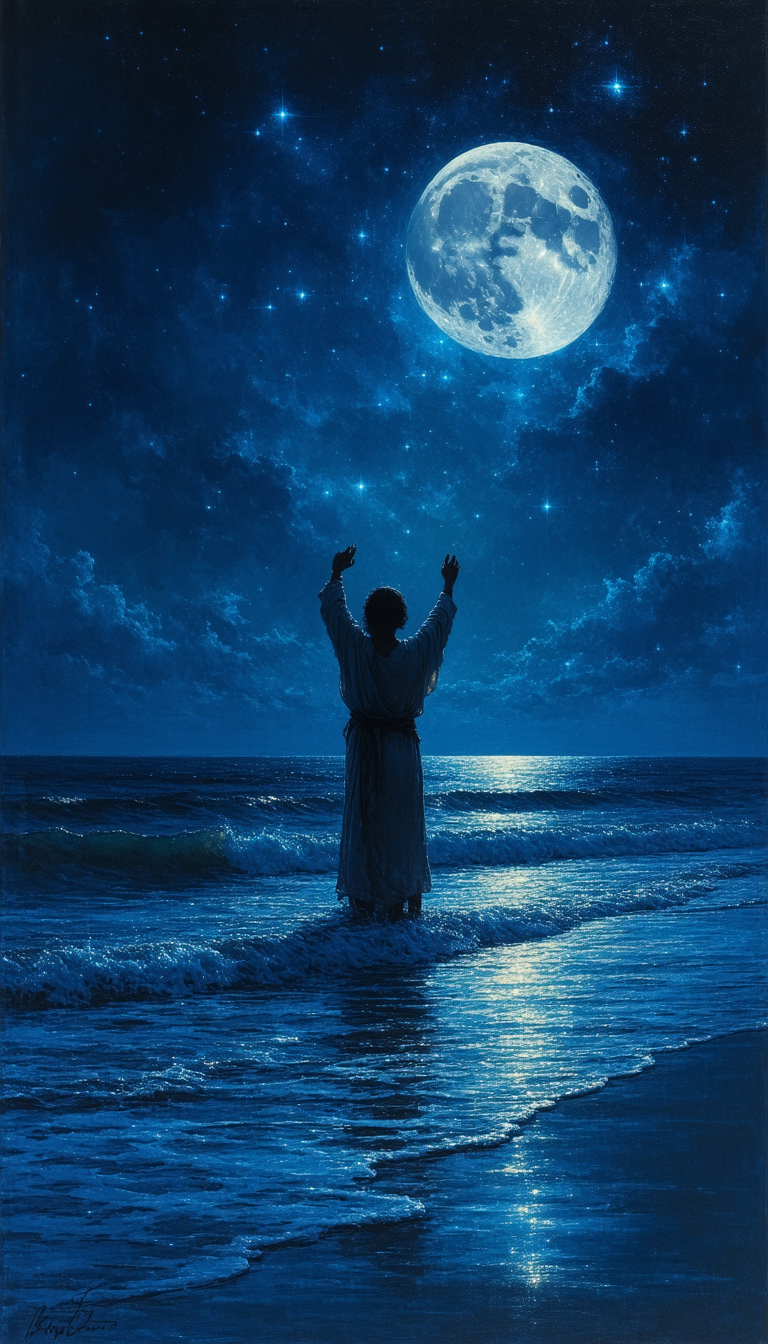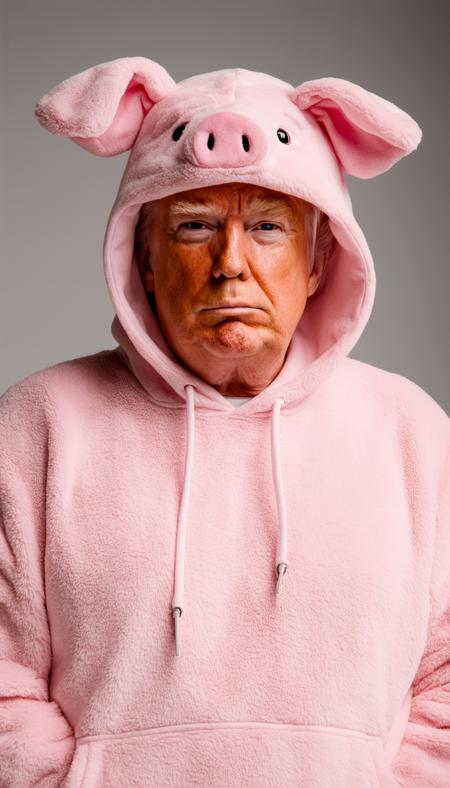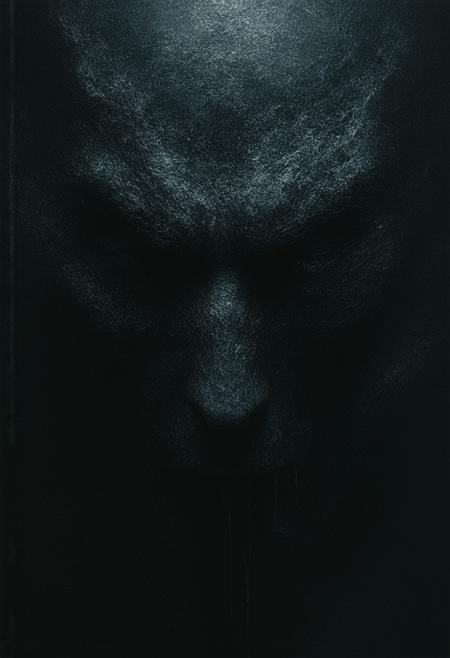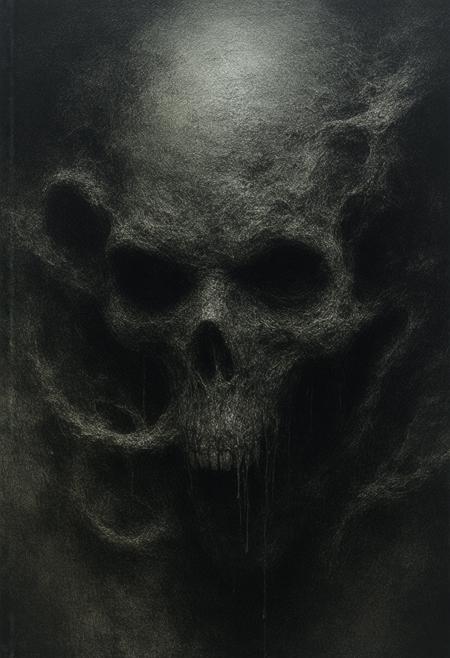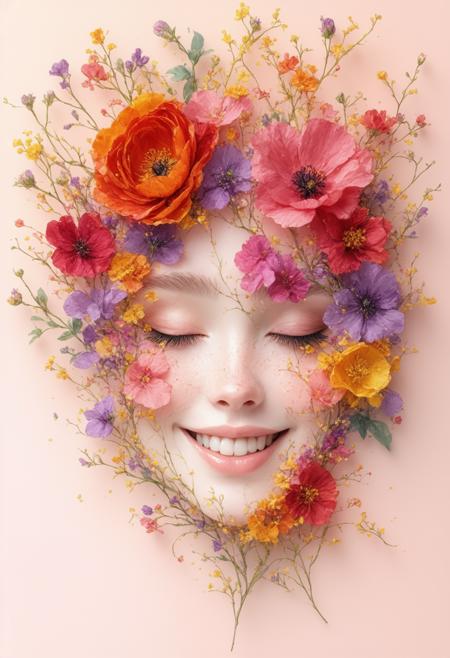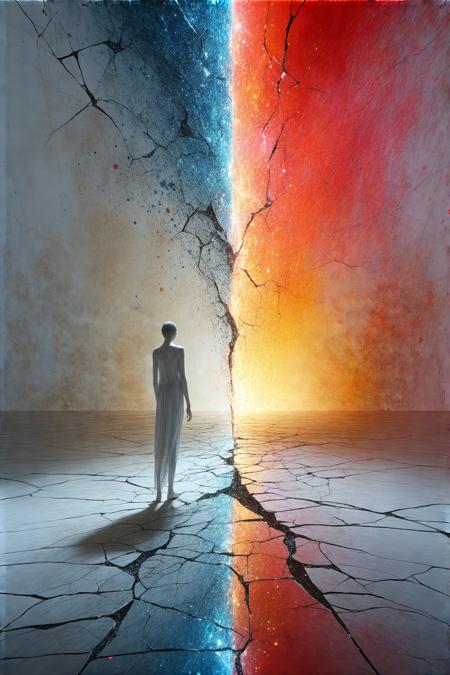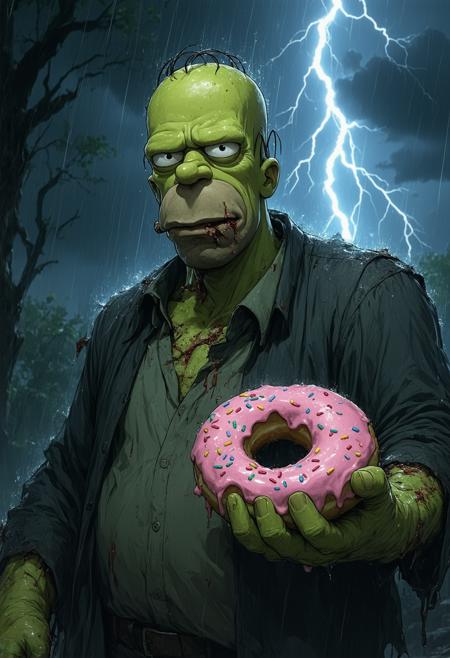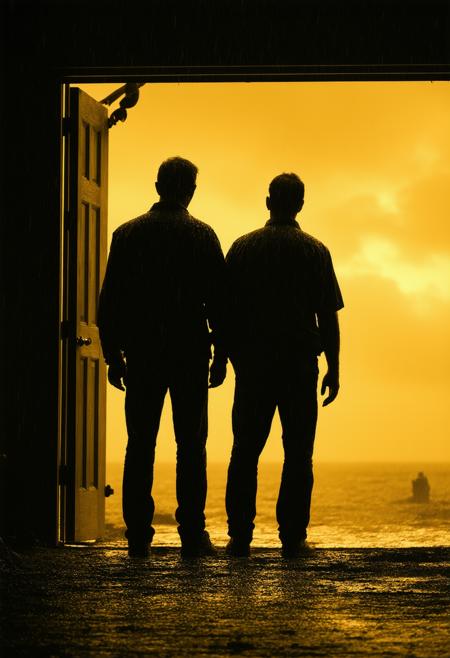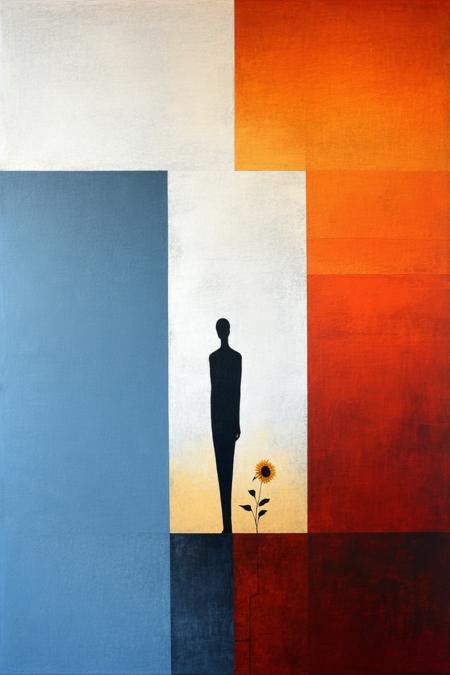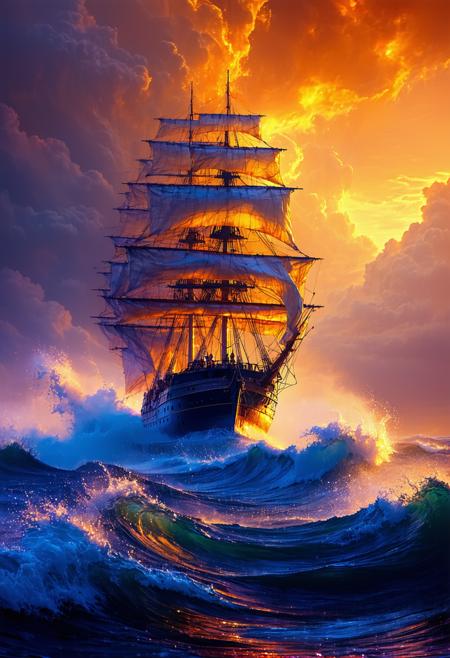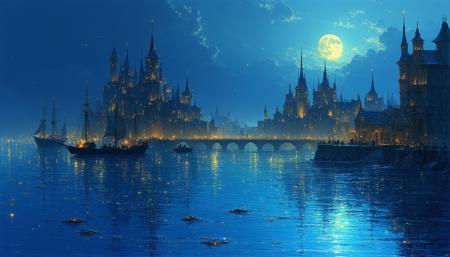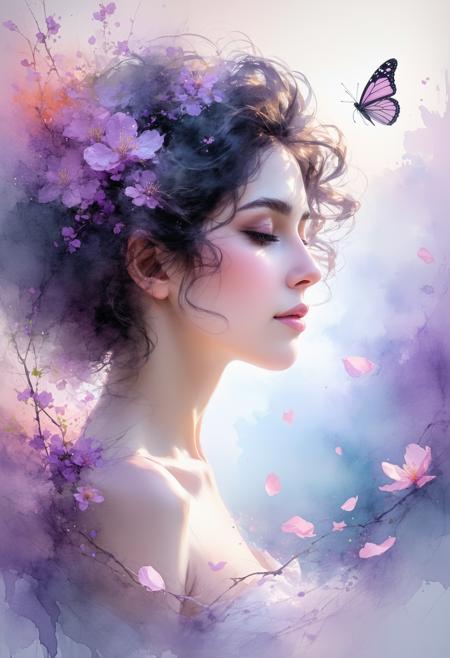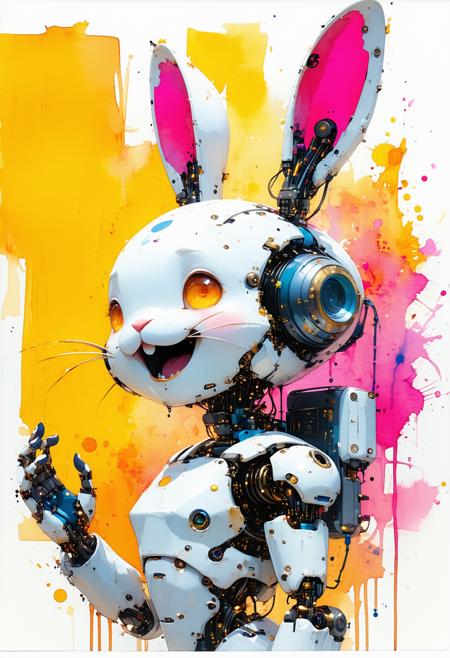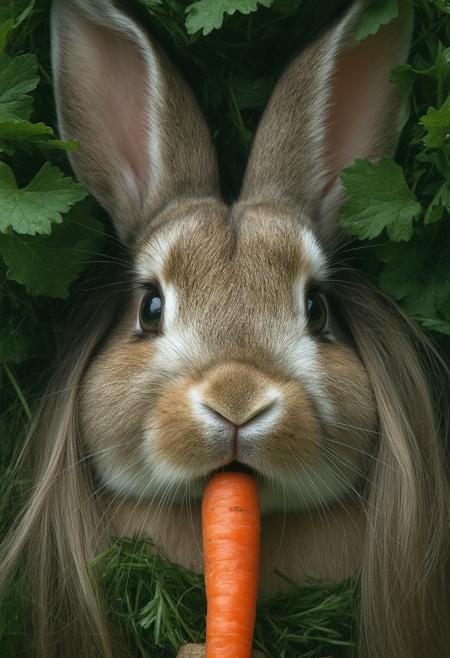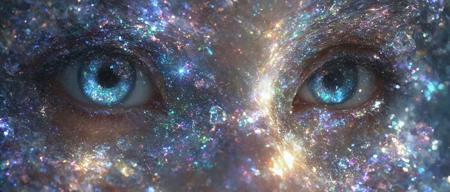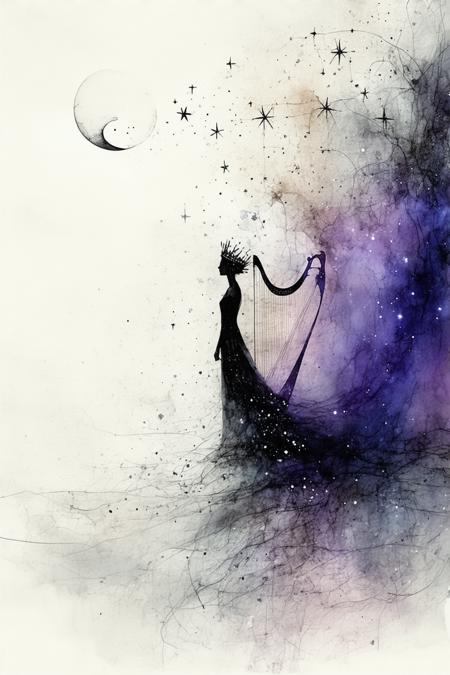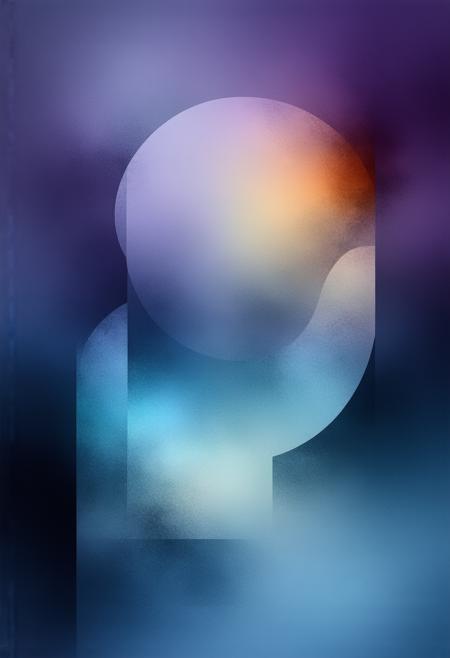A mystical nighttime scene where a solitary figure in flowing robes stands at the ocean's edge, their arms raised in passionate conducting gestures as musical notation materializes in the waves beneath a celestial symphony. The rising moon bathes the scene in otherworldly luminescence, its light creating a perfect pathway across waters that transform from liquid to flowing musical scores. The star- filled sky above arranges itself into the shapes of orchestral instruments, each constellation twinkling with its own rhythmic pulse. Drawing inspiration from Rob Gonsalves' masterful transitions between reality and fantasy, and Vladimir Kush's symbolic surrealism, the composition creates a harmonious blend between the natural and the musical world. The figure's hair and clothing move in perfect synchronization with the waves, while the color palette shifts from deep indigos to warm golden moonlight, suggesting the rich tones of a full orchestra. The overall atmosphere captures the epic scope of Hans Zimmer's compositions, with careful attention to oil paint textures and brushwork that add depth and movement to every element, from the starlit sky to the musical waves below
